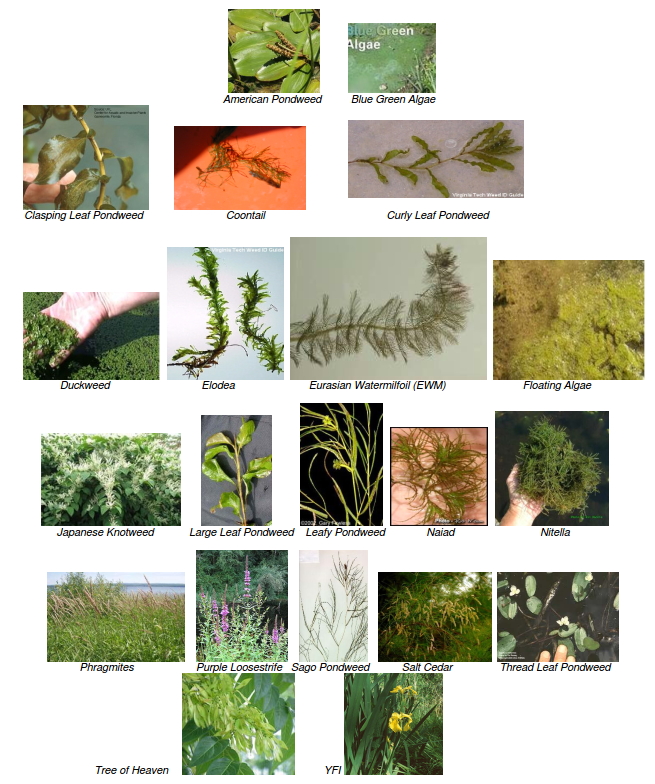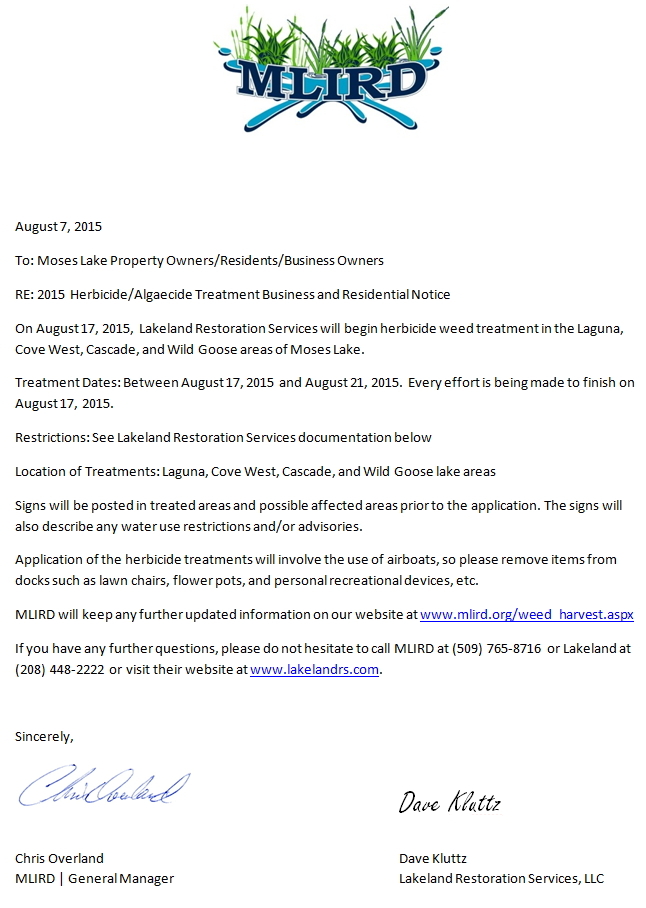



Click HERE for 2017 Aquatic Treatments General Information Click HERE for 2017 Phase 1 Treatment Zones Click HERE for 2017 Phase 2 Treatment Zones 2016 and prior years In the summer months of last year, irrigation water flows entered into Moses Lake through Crab Creek and discharged through the South Dam. That extra incoming water flow was very helpful in refreshing Moses Lake during the summer of 2015. Maintenance was required on that canal system this year, so those additional water flows were not available for Moses Lake during the summer of 2016. We will once again engage in aquatic treatments of Moses Lake and also have a greater harvester presence on the lake during the summer of 2016.Click HERE for 2016 Phase 1 Treatment Zones Click HERE for 2016 Phase 1 Treatment Map Click HERE for 2016 Phase 2 Treatment Map Click HERE for Blue-Green Algae Facts Related Sites:
 2015 - Phase Two plan below   For More Info on 2015 Weed Treatments CLICK HERE

For More Info on 2015 Weed Treatments CLICK HERE Collaborations Benefit Area LakesA unique set of new inter-local agreements between MLIRD, three state agencies, the Grant County Noxious Weed Control Board (GCNWCB), City of Moses Lake and the U.S. Bureau of Reclamation, are expected to result in dramatic reductions of noxious invasive plants this summer. The overall goal is to eliminate rapidly spreading infestations of invasive aquatic plants, especially Phragmites, Purple Loosestrife and Yellow Flag Iris in Moses Lake and upstream in Soap, Park, Alkali, Blue and Lenore Lakes. Inaction is not an option. Unless brought under control, and considered to be “of utmost urgency” by experts, invasive species will continue migrating to Moses Lake and seriously inhibit boating, fishing and other recreation activities. Because multiple agencies have responsibilities for the aquatic habitat along the Moses Lake shoreline, as well as other public lands further upstream, an interlocal agreement and a control plan were outlined during inter-agency meetings in May 2010 In partnership with the state Departments of Natural Resources (DNR), Fish and Wildlife (DFW) and Ecology (ECY), this collaborative venture will help implement existing MLIRD and Weed Board plans while also expanding upon a successful pilot project completed in 2010. With $75,000 in grant funding from Ecology, plus various in-kind contributions from DNR and the other partners, the total project cost is estimated at $104,000. Synchronized operations helped secure the grant money, which in turn represents significant savings to the District in time and labor costs. Results will be obvious in easier water access, better swimming, boating and fishing conditions, plus protection of adjacent shoreline property values. Second $75,000 Grant follows 97% Success in Milfoil EradicationMLIRD has received a second $75,000 (*) grant from the Department of Ecology for the Milfoil project set to resume in July. This new grant reflects the 97% eradication success rate in approximately 300 acres tackled last year, and helps reduce rate payer costs for the three-year contract the District signed with Lakeland Restoration Services (LRS) for aquatic herbicide treatment of invasive Eurasian Water Milfoil. Also in 2010, in a strategic “pilot project” to save time and expense, the District initiated an inter-local partnership agreement with GCNWB and the Department of Ecology to attack Yellow Flag Iris, Purple Loosestrife and Phragmites, also extremely invasive noxious weeds. Treated by LRS during the same week, this 3-species treatment tactic reduced paperwork and labor costs, which serves the wider community more efficiently by combining services. (*) In addition to $104,000 project.
|
